Jeremy Bennington, Vice President of PNT Assurance, Spirent
What’s worse than having your aircraft’s navigation and safety systems knocked out midflight? Having them actively lie to you, saying you’re in one location when you’re actually somewhere else.

Spoofing of the global positioning system (GPS) and the global navigation satellite system (GNSS) signals is an acute problem that more commercial aircraft crews, air traffic controllers and carriers find themselves confronting and battling every day—the time has come for the industry to take remediative action.
_______________________________
The Rise Of GPS Spoofing
___________________
The concept of jamming or manipulating wireless signals is as old as modern warfare—more drones and other uncrewed aircraft systems (UAS) rely on GPS/GNSS and it became inevitable that we’d see efforts to disrupt those crucial signals.
Now, though, as large-scale drone warfare emerges in the Ukraine, the Middle East, and elsewhere, we’re getting a clearer picture of how disruptive these tactics can also be to civil aviation. And early results are disturbing.
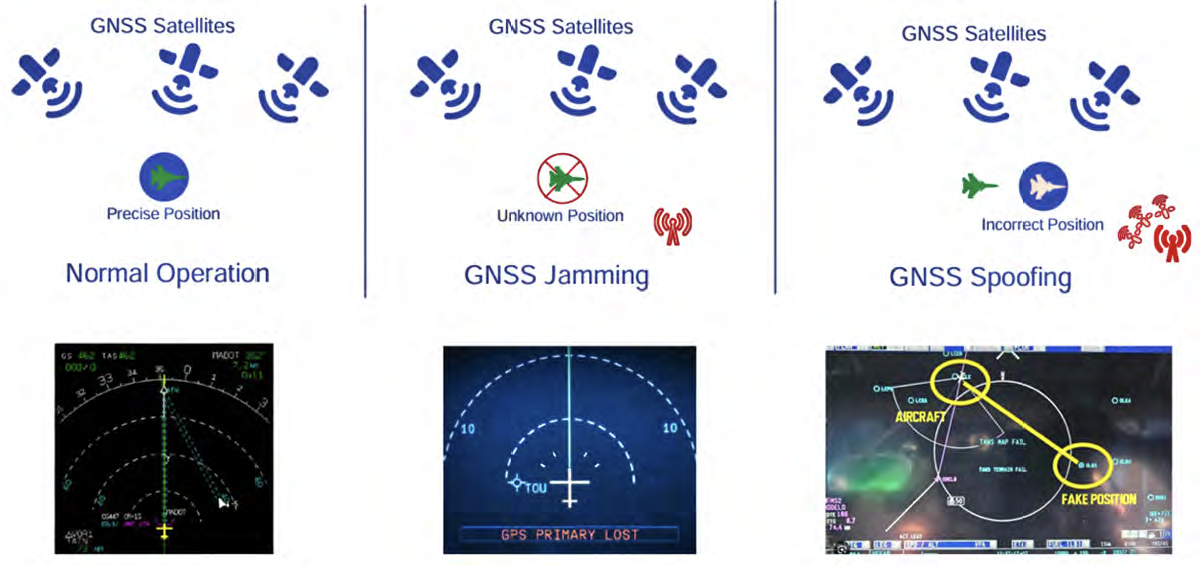
Figure 1. Satellite navigation system jamming vs. spoofing
Commercial aircraft have long had to contend with occasional GPS/GNSS jamming, which prevents onboard navigation systems from maintaining accurate positioning. GPS spoofing, however, goes farther, causing GPS/GNSS systems to use a false reading (See Figure 1 on the following page).
Within the context of warfare, there may be multiple reasons to spoof GPS signals. By tricking a UAS’ navigation system into believing it’s in restricted airspace near an airport, for example, many drones will immediately ground themselves or refuse to take off. Spoofed vehicles could be convinced to navigate into buildings or terrain or misdirected to reconnoiter or deliver payloads to the wrong location.
Multiple state actors now use this tactic to disrupt GPS/GNSS signals over large areas. Currently, we see significant spoofing activity around conflicts in Europe, Asia, and the Middle East (See Figures 2 and 3 on following pages). However, the (presumably) unintended consequences of GPS spoofing extends much farther.
It’s important to underscore that the civil aviation industry is well prepared to deal with the safety concerns of GPS jamming. Pilots and crews have multiple redundant information sources and are extremely well-trained on what to do when GPS-enabled systems cease functioning. But that’s what makes spoofing so insidious: navigation and safety systems can appear to be working normally; they’re just providing bad information.
__________________
A Growing Problem
________________________
The aviation industry is working to implement navigation systems with better protection against jamming and spoofing.
For now, though, most avionics in most commercial aircraft are not designed to be resilient against these attacks, creating significant issues.
The following three images are of Mediterranean spoofing incidents, August 2024
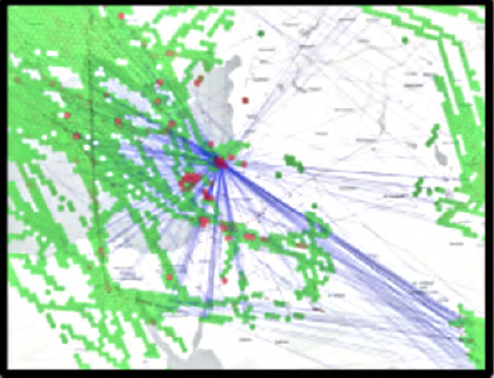
These images show incidences of spoofing around the Mediterranean on (clockwise from top left) August 20, 21, and 25, 2024. Green cells represent aircraft locations with no spoofing events. Red contain spoofed aircraft. Blue lines connect the last know “good” location of each aircraft with the spoofed location – many, in this case, being spoofed to an area close to Queen Alia International Airport in Jordan
In addition to losing GPS/GNSS navigation, disruptions to these systems affect many other aircraft systems that depend on positioning data. These include flight management, ground proximity warning systems (eGPWS), terrain awareness and warning systems (TAWS), attitude and heading reference systems (AHRS), autopilot, data links, runway overrun protection, traffic/surveillance, and several others.
Losing these systems substantially increases the workload for pilots and crew, who must determine which systems they can trust and use alternatives if available. Compounding the problem, some of these systems don’t recover even after leaving the affected airspace. In some newer aircraft, they can’t be reset in flight at all, so the extra workload also includes landing without key automation and safety systems.
The problems don’t end with the directly affected aircraft. The industry’s entire approach to airspace management, flight levels, arrivals and departures, oceanic transits, and many other procedures, are based on having accurate positioning.
If an aircraft doesn’t have the required navigational performance (RNP) when making its arrival, for example, controllers may have to clear out airspace around it, disrupting many other flights. At best, these problems reduce efficiency and increase fuel burn (and costs).
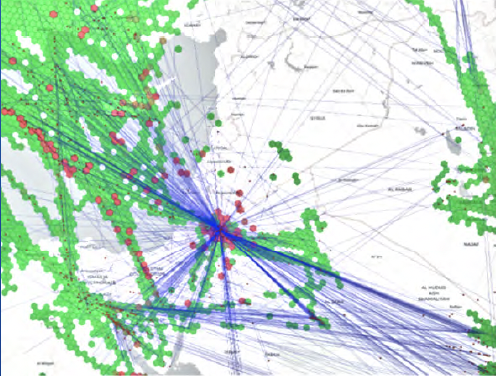 Potential options include, among others, implementing dual frequency GNSS, incorporating encrypted/authenticated signals, installing controlled reception pattern antennas (CRPAs), and adding alternative and complementary sensors.
Potential options include, among others, implementing dual frequency GNSS, incorporating encrypted/authenticated signals, installing controlled reception pattern antennas (CRPAs), and adding alternative and complementary sensors.
But they can quickly create diversions, delays, and crew disruptions that ripple out to affect dozens of other flights. Sidestepping Spoofing Commercial avionics manufacturers are working to improve the resiliency of GPS/GNSS systems, and industry groups are developing new standards to address the problem.
Each of these approaches brings complications in terms of requiring new hardware to be added to large fleets and critical systems to be redesigned and tested. As a result, these efforts will take several years to bear fruit.
What can we do while we wait? Fortunately, the industry has developed some mitigations by using GPS jamming and spoofing detection services.
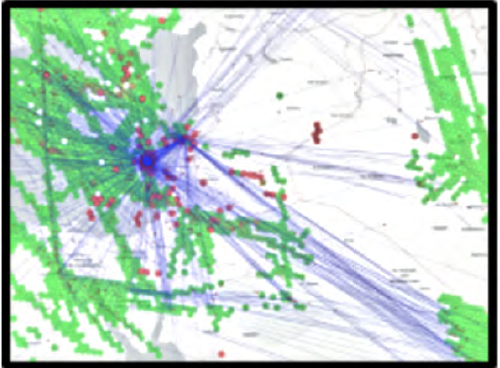
These services analyze GPS/GNSS signals and Automatic Dependent Surveillance-Broadcast (ADS-B) data coming off aircraft to predict what real positioning data should look like and identify when signals are being jammed or spoofed.
More advanced services integrate even more data sources and may even use digital twins to analyze each aircraft’s known capabilities to detect anomalies. These services can then issue alerts to aircraft crews, air traffic controllers, dispatchers, and others that GPS/GNSS navigation signals are being disrupted in a particular area, similar to weather or turbulence alerts.
While this won’t prevent GPS spoofing, it gives pilots the situational awareness to know where spoofing is happening ahead of time so they can implement fallback procedures (Please see Figure 4).
_________________
Taking Action
___________
If you follow this space, you may have noticed more pilots calling attention to this problem in recent months. However, too many industry stakeholders still view GPS spoofing as a rare phenomenon, or at least one limited to far-off areas of conflict. Unfortunately, this just isn’t the case.
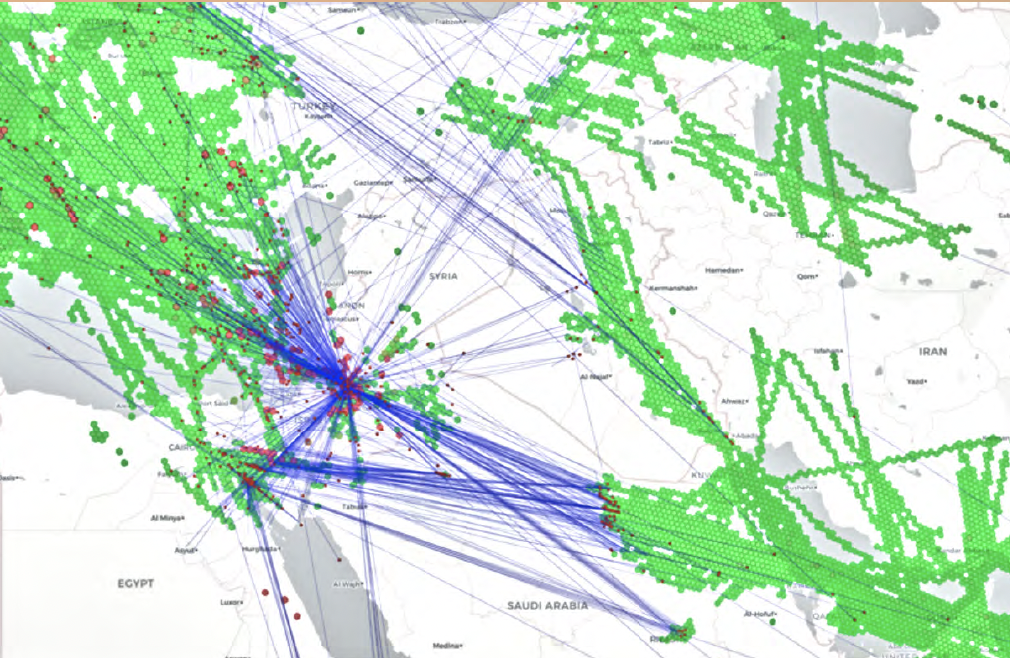 Figure 3. Pervasive spoofing activity .This map shows the same information, over the same region as the previous figure, but in just a three-hour period on September 19, 2024 — 183 flights spoofed — 40 airlines, plus United States Air Force and private jets — 98 of spoofed aircrafts’ GPS units thought they had good integrity while being spoofed.
Figure 3. Pervasive spoofing activity .This map shows the same information, over the same region as the previous figure, but in just a three-hour period on September 19, 2024 — 183 flights spoofed — 40 airlines, plus United States Air Force and private jets — 98 of spoofed aircrafts’ GPS units thought they had good integrity while being spoofed.
First, these disruptions have become extremely common. We detect hundreds of flights being impacted by spoofing attacks every day. There are aircraft flying right now with GPS/GNSS systems reporting false information and with disabled safety systems.
Thanks to well-trained crews and redundant procedures, no major safety incidents have resulted yet from GPS spoofing. But more flights are impacted daily due to this issue—with all the knock-on costs and disruptions that come with these incidents.
Additionally, the problem will only increase in number. We’re still in the early days of drone warfare, never mind what the civil and commercial drone landscape will look like in a few years. As more drones come online, expect to see more GPS jamming and spoofing, and more widely available tools to enable it.
Some of these will be benign or even lifesaving, such as security systems to prevent drone attacks on soft targets. But they’ll still create problems for commercial aviation, other industries, and even your ability to use your smartphone’s maps and emergency calling.
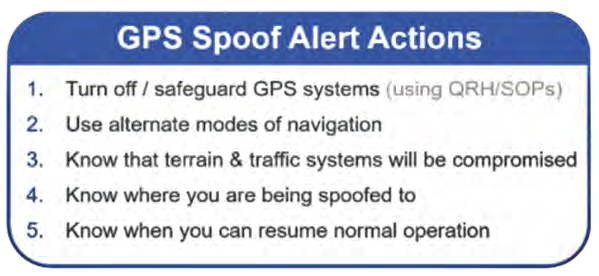
Figure 4.
Our industry can and will meet this challenge. However, it’s time for more industry stakeholders—especially within airline carrier business organizations—to appreciate the urgency of this problem.

Long-term solutions are coming, but if we want to avoid the rapidly growing costs and risks of GPS spoofing, we should be investing in systems to detect and alert affected aircraft now.

Jeremy
Bennington
Author Jeremy Bennington is the Vice President of PNT Assurance at Spirent Communications. He has 20 years of experience leading new technology and business innovations across several industries including telecommunications, video, and transportation industries. Jeremy currently leads the Spirent PNT Assurance business to improve the performance and reliability of GNSS systems in operation. Jeremy is not only active within engineering and business, he has also participated in ITU, CableLabs, SCTE, IEEE, TIA, ASTM, ANSI, and other standards development to ensure industries can increase their adoption of new technology and scale economics. Jeremy holds an MSc in Management, a BSc in Computer Engineering from Purdue University and is a patent author. He is also an active pilot.
www.spirent.com


